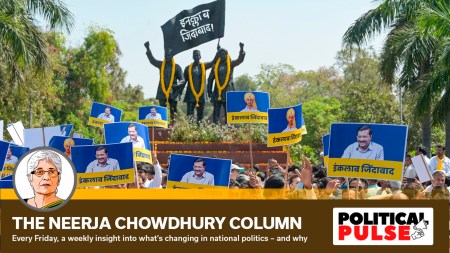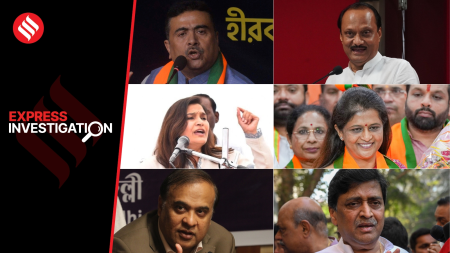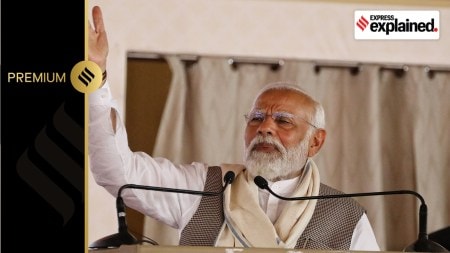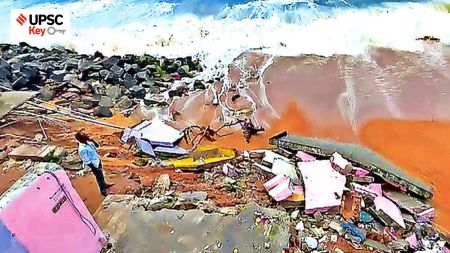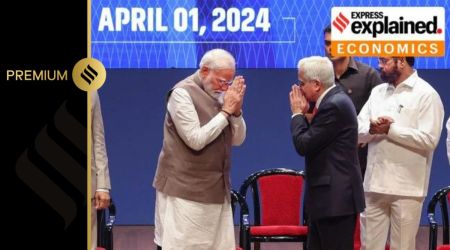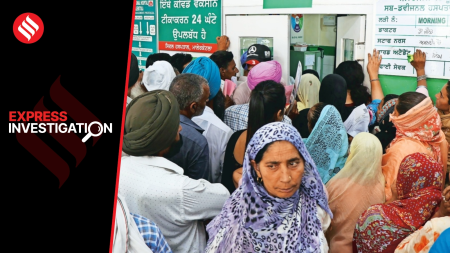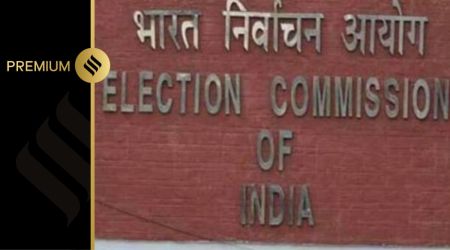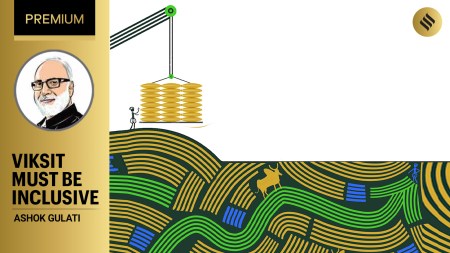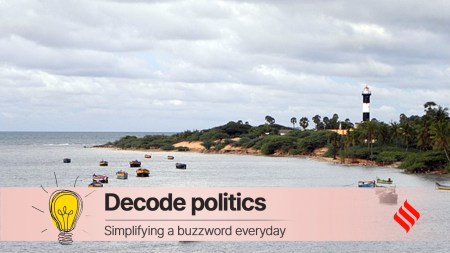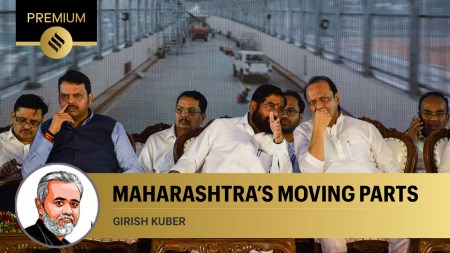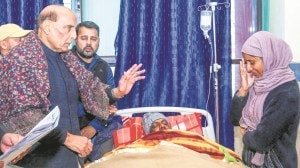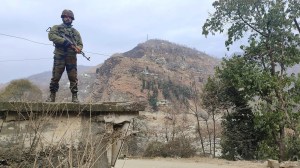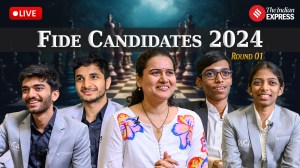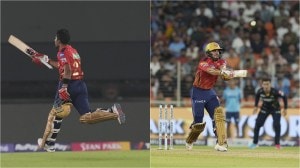- India
- International
From Jogendra Nath Mandal to Saveera Parkash: The Hindus in Pakistan’s electoral politics
Muhammad Ali Jinnah had envisioned Pakistan to be a state represented by people from all religions, a belief undermined by his decision to appoint a Hindu, Jogendra Nath Mandal as the country's first Law Minister. However, external complications and internal politics reshaped Pakistan's electoral system, making it difficult for non-Muslims to achieve representation. Despite these challenges, a number of Hindus have been elected to positions of power, paving the way for more to do so in the future.
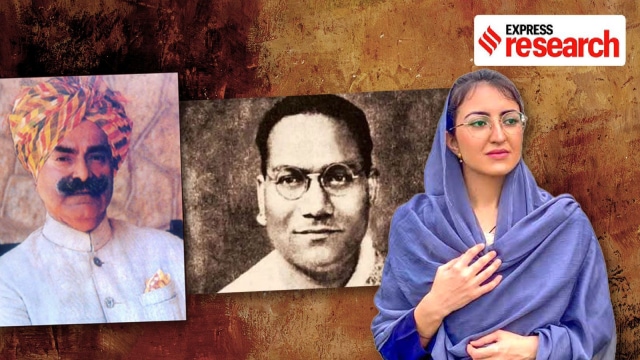 Ratna Bhagwandas Chawla, Jogendra Nath Mandal, and Saveera Parkash, all prominent Hindus in Pakistani politics
Ratna Bhagwandas Chawla, Jogendra Nath Mandal, and Saveera Parkash, all prominent Hindus in Pakistani politicsSaveera Parkash, a 25-year-old doctor, will be the first Hindu woman to contest upcoming elections from the restive Khyber Pakhtunkhwa province in Pakistan. She said that if elected, she will help bridge the divide between Pakistan and India. Parkash, however, is not the first Hindu to enter Pakistani politics, many coming before her with varying degrees of success.
Hinduism is the second largest religion in Pakistan after Islam with Hindus accounting for roughly 2.1 per cent of the population, according to the 2017 census. According to Pakistani census data, before Partition, that figure stood at around 14 per cent. but the violence that gripped the two nations in 1947 led to an exodus of Hindus and Muslims on both sides.
At the time of Pakistan’s creation, its founder, Muhammad Ali Jinnah, supported the two-nation theory which promised Hindus equality in Pakistan to safeguard the rights of Muslims in India. In an address to the constituent assembly of Pakistan on August 11, 1947, Jinnah said “you will find that in the course of time Hindus will cease to be Hindus and Muslims will cease to be Muslims, not in the religious sense, because that is the personal faith of each individual, but in the political sense as the citizens of the State.”
Jinnah’s inclusiveness was not mere rhetoric, as evidenced by his appointment of Jogendra Nath Mandal, a Scheduled Caste Hindu from East Pakistan, as the country’s first law minister. Jinnah also advocated for Mandal to preside over a session of parliament in which the former was to be sworn in as the first Governor General. As historian Ahmed Saleem argues in his book Pakistan aur Aqliatien (2010), “the fact that one of the minority members was elected to preside over the session hints at the progressive attitude of the new state, and it augurs well for the future. Pakistan itself was brought into existence by the unrelenting efforts of a minority of the Indian Subcontinent.”
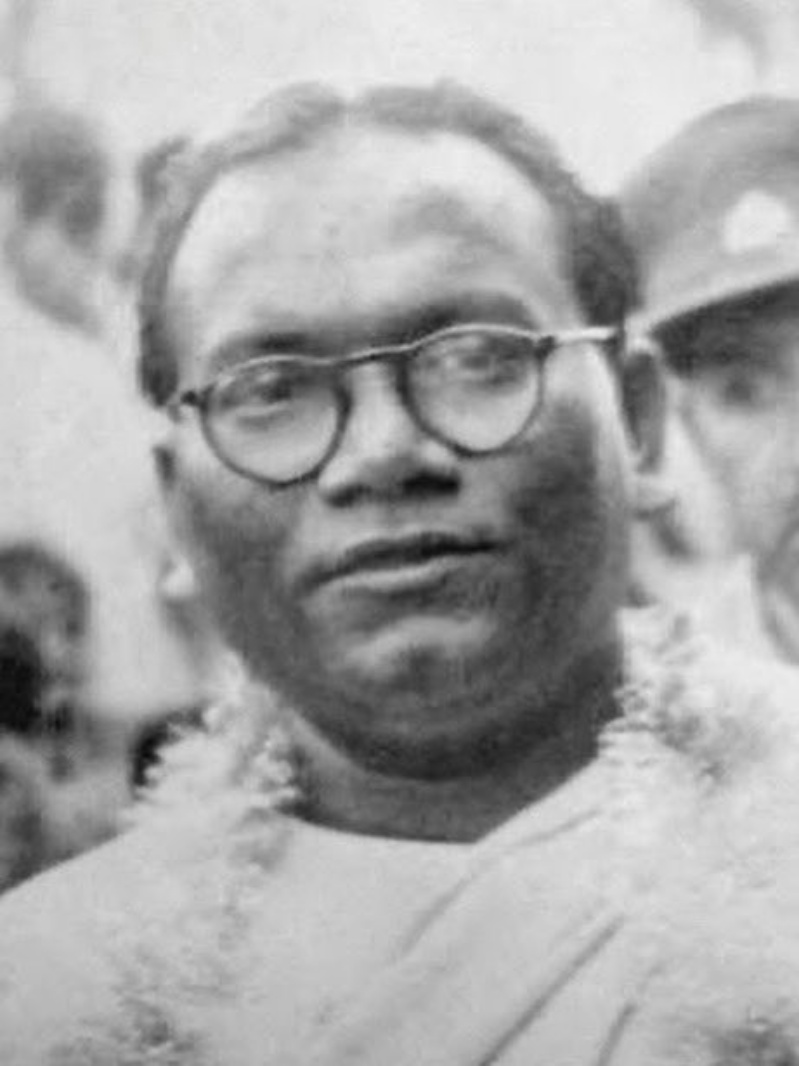 Jogendra Nath Mandal (Wikimedia Commons)
Jogendra Nath Mandal (Wikimedia Commons)
Mandal had long championed the cause of Muslims and was a proponent of the 1949 Objectives Resolution that transformed Jinnah’s secular Pakistan into a Muslim state. However, he was soon left disillusioned with the promise of Pakistan, leaving the country for India in 1950, citing anti-Hindu bias by the bureaucracy. It didn’t help that two years before, his biggest supporter, Jinnah died, exacerbating the divide between Hindus and Muslims that had spiralled after Partition.

During Partition, Hindus and Sikhs fled Pakistan while Muslims left India, fearing persecution based on religious lines. The upheaval led to tragic consequences, with millions displaced and countless lives lost in the chaos.According to David Gilmartin, Professor, North Carolina State University, Partition reinforced the notion that territory was linked to religious identity. In Partition, Pakistan, and South Asian History (1998), he writes that “nothing dramatized the connection between individual Muslim identity and the new Pakistan state more clearly than the connections established in these years between boundaries and physical survival.”
Compounding these early problems was East Pakistan, now Bangladesh, which had a sizable Hindu and Bengali population. Cultural, linguistic, and economic ties between Bengalis on both sides of the border, combined with the comparatively high proportion of Hindus in the country’s east, meant that widespread Hindu or Indian influence in East Pakistan was a constant source of anxiety for West Pakistanis.
In Between Mosque and Military, former Pakistani ambassador to the United States, Husain Haqqani, argues that facing the threat of India, Pakistani’s elite chose to deepen the tensions between Hindus and Muslims, establishing the latter as the country’s state religion. He writes that “unsure of their fledgling nation’s future, the politicians, civil servants, and military officers who led Pakistan in its formative years decided to exacerbate the antagonism between Hindus and Muslims that had led to Partition as a means of defining a distinctive identity for Pakistan with Islamic Pakistan resisting Hindu India.”
Pakistan’s national identity was always linked to religion, but whereas Jinnah had attempted to create something of a secular state, his successors did not share that vision.
The years after Jinnah
After Jinnah’s death, his ideas faced pushback from the ruling Muslim League. A series of measures were enacted to cement the divide between Hindus and Muslims, starting with The Objectives Resolution in 1949. Those who supported the Resolution later demanded separate electorates in which the community would select its own representatives through an election and only members of that group would be permitted to run for office and cast ballots.
The desire for distinct electorates was met with varying responses from religious minorities. The concept was backed by Christians in West Pakistan, but Hindus in East Pakistan were against it. Their reasoning was the same as that put up by the Congress in India before Independence: distinct electorates would split Hindus into upper and scheduled castes.
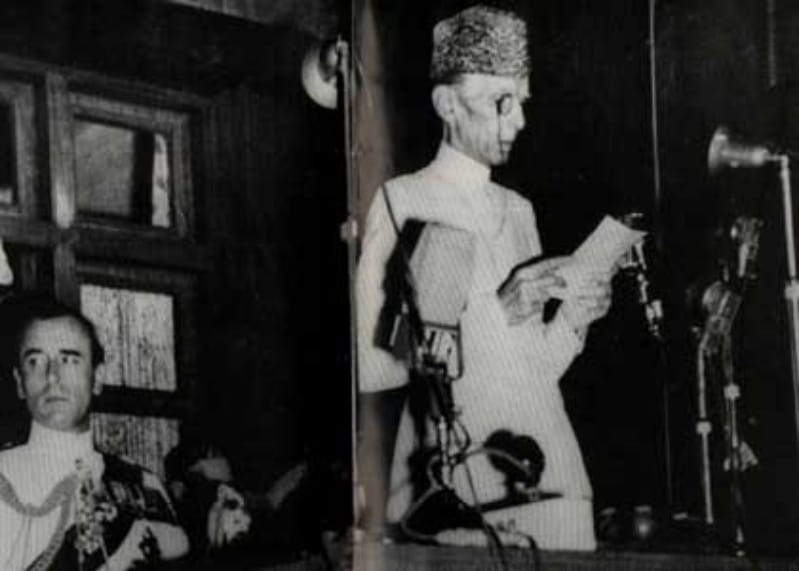 Jinnah addressing the Constituent Assembly in 1947 (Wikimedia Commons)
Jinnah addressing the Constituent Assembly in 1947 (Wikimedia Commons)
The problem remained unresolved. The 1956 Constitution said that the decision would be made by the next Parliament which subsequently adopted a combined electorate for East Pakistan (now Bangladesh) and a separate electorate for West Pakistan. Facing considerable backlash from Hindus in West Pakistan, in 1960, prime minister Ayub Khan appointed a commission to probe whether a separate or joint electorate was best for the country. Writing about Hindu concerns, the commission stated, “their demand for a joint electorate seems clearly to be for some ulterior purpose other than the welfare of Pakistan.”
The commission also recommended that East Pakistan have separate electorates, but Ayub Khan rejected their recommendations and created a joint electorate. His successor, Yahya Khan, then introduced a seminal piece of legislation in 1970 known as the Legal Framework Order. Under it, the “basic democracies” system was replaced by a more direct form of representation, in which people could choose their representatives and the distribution of seats in the National Assembly would be apportioned among the provinces on the basis of population.
This shift toward direct elections was intended to enhance democratic representation and participation, though it was one of the factors that led to tensions between East and West Pakistan due to perceived inequalities in representation and power-sharing between the two regions. Ultimately, dissatisfaction with this framework contributed to the escalating tensions, culminating in the Bangladesh Liberation War and the independence of Bangladesh in 1971.
After the loss of East Pakistan, the country continued to promote a joint electorate (including in its 1973 Constitution). However, anti-Ahmadi riots that broke out in Punjab between May and October of 1974 led to the Second Constitutional Amendment, which proclaimed Ahmadis to be non-Muslims and required modifications for their political participation. Thus Pakistan reverted to a system of separate electorates, once again marginalising non-Muslims by depriving them of adequate representation.
In the 1980s, under prime minister Zia ul-Haq, the situation became dire. Zia introduced a system under which non-Muslims could vote only for candidates of their own religion, ostensibly under the guise of ensuring minority representation. However critics argued that under this system, Muslim candidates who dominated the assemblies no longer had any incentives to cater to the needs of minorities.
After Hindus, Christians and Ahmadis successfully conducted a partial boycott of the 2001 elections, the system was finally abolished. The separate electorate system was criticised by the Rawalpindi-based Christian Study Centre, a think tank, as it “sharpened the minority-majority divide, decreased interest for electoral politics among the minorities, allowed hatred against non-Muslims to spread and led to the misuse of discriminatory laws against them. Those elected through this system, the report said, would always “go along with the ruling party or coalition unquestionably and unimaginatively … thus, the very purpose of minority representation was undone”
The current proportional representation system for religious minorities was instituted in 2002 by Pervez Musharraf. Non-Muslims can vote and run for office in general elections under this system, with the exception of Ahmadis. However, they also have seats set aside for them in the Senate, National Assembly and four provincial assemblies. Instead of direct elections, political parties submit lists to the Election Commission in order to fill these seats. As a result, religious minorities are no longer limited to voting for minority members in the National and Provincial assemblies and can cast ballots for mainstream representatives as well. Despite this, Hindus remain largely underrepresented, attaining only four reserved seats and on occasion, winning one or two general seats.
Nonetheless, there have been a number of prominent Hindu politicians in Pakistan, notably from the Umerkhot and Tharparkar regions of Sindh.
Hindu politicians
The most famous and influential Pakistani Hindu politician was no doubt Mandal. Mandal, a Muslim League member nominated in the 1946 interim administration, favoured a United Bengal, but once Lord Mountbatten announced Partition on June 3, 1947, he began to lean more in the direction of Pakistan. His backing for the League was based on his conviction that Jawaharlal Nehru and Mahatma Gandhi would not be able to adequately defend Dalit interests in India as they would in Jinnah’s Pakistan.
As TCA Raghavan, former High Commissioner to Pakistan, writes in the Indian Express, “possibly he (Mandal) felt that if Partition was inevitable, then in Pakistan, free from the perceived domination of upper castes of the Congress and Indian politics, an independent political space for Scheduled Castes existed or would come about to secure their social and economic advancement.” Mandal’s hopes were soon extinguished with the East-West divide setting the tone for minority underrepresentation. In his resignation letter, Mandal wrote, “I have come to the conclusion that Pakistan is no place for Hindus to live in and that their future is darkened by the ominous shadow of conversion or liquidation.”
After Mandal, Hindu politicians never obtained a position quite as significant in Pakistani politics. However, a number of individuals from Umerkot, around 60 kilometres from the Indian border, continue to influence national proceedings. Umerkot is famous for being the birthplace of Akbar, who was born at the Umerkot Fort in 1542 after the Hindu Raja Rana Parasad gave refuge to his father Humayun. Fifty-two per cent of the population is Hindu, making Umerkot the only district in Pakistan with a majority that is not Muslim.
The first prominent Hindu politician from the district was Rana Chandra Singh whose father, Rana Arjun Singh, chose to remain in their ancestral lands over migrating to India. Rana Chandra Singh was one of the founding members of the Pakistan People’s Party (PPP) and was elected to the National Assembly seven times between 1977 and 1999. He also served as Minister for Agriculture and Revenue, and was the Chairman of National Commission of Minorities. However, despite his electoral and political success, Rana Chandra Singh was still considered suspect by Muslim politicians. As Waseem Altaf, a retired Pakistani bureaucrat, says in an interview with journalist Shakil Chaudhary on his educational YouTube channel “Whenever the Cabinet was given a defence-related briefing, Rana Chandra Singh was asked to leave the Cabinet Room.”
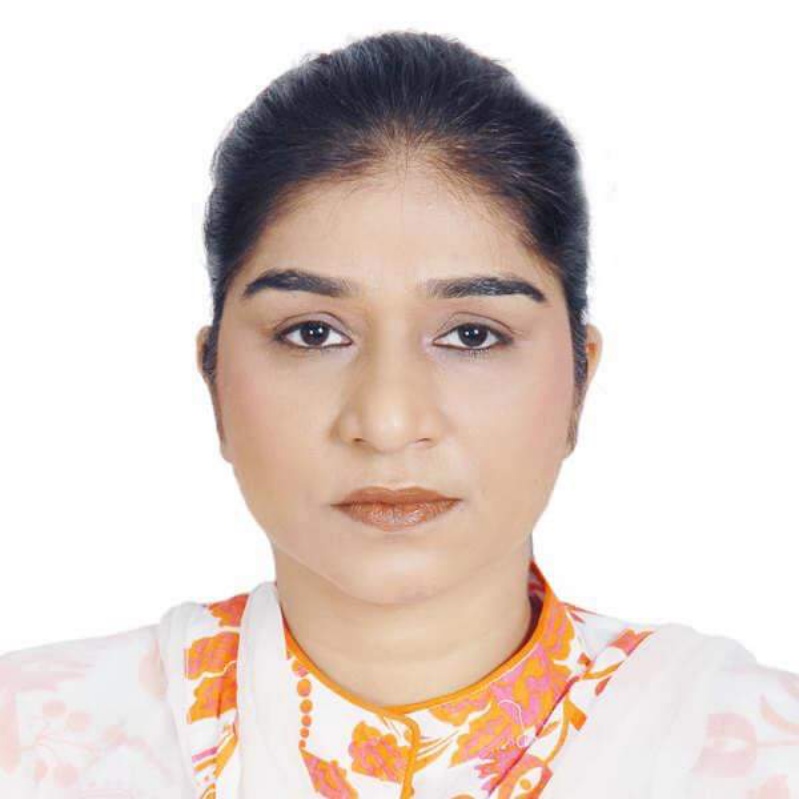 Ratna Bhagwandas Chawla, the first Hindu woman elected to the Pakistani Senate (X)
Ratna Bhagwandas Chawla, the first Hindu woman elected to the Pakistani Senate (X)
Umerkot also produced Ratna Bhagwandas Chawla, the first Hindu woman elected to the Senate of Pakistan in 2006. After Pakistan introduced a reserved seat for non-Muslim women in 2018, Krishna Kumari Koli, also from Umerkot, became the second Hindu woman to win a senate seat. In 2020, Koli walked out of the Senate following the body’s decision not to pass a bill that would protect the rights of minorities.
Like Umerkot, Tharparkar, the largest district in Sindh, also has a sizable Hindu population, the largest of any district in Pakistan. In the 2018 elections, Mahesh Kumar Malani, a Hindu from Tharparkar, became the first non-Muslim to win a general seat in the Pakistan national assembly. Tharparkar, despite having one of the lowest rates of development in Pakistan, is known for its interfaith harmony. Muslims across Tharparkar also largely abstain from slaughtering cows in order to protect the sentiments of their Hindu neighbours.
Tharparkar and Umerkot are, however, exceptions from the norm. In most parts of Pakistan, religious discrimination is rampant and Hindu politicians have long campaigned for issues related to forced conversions and penalties under Pakistan’s strict blasphemy laws. Ramesh Kumar Vankwani, a former member of the National Assembly from Tharparkar, has repeatedly spoken out against this discrimination. In 2018, he stated that Hindus were being subjected to forced conversions in Sindh, leading 5,000 Hindu families to flee the country annually.
While these issues remain, one can hope that the election of more Hindus into Pakistani politics will improve the plight of their communities over time.
Further reading
- Ahmed Saleem, Pakistan aur Aqliatien, 2010
- David Gilmartin, Partition, Pakistan, and South Asian History, The Journal of Asian Studies, 1998
- Husain Haqqani, Between Mosque and Military, Viking, 2016
Apr 05: Latest News
- 01
- 02
- 03
- 04
- 05


